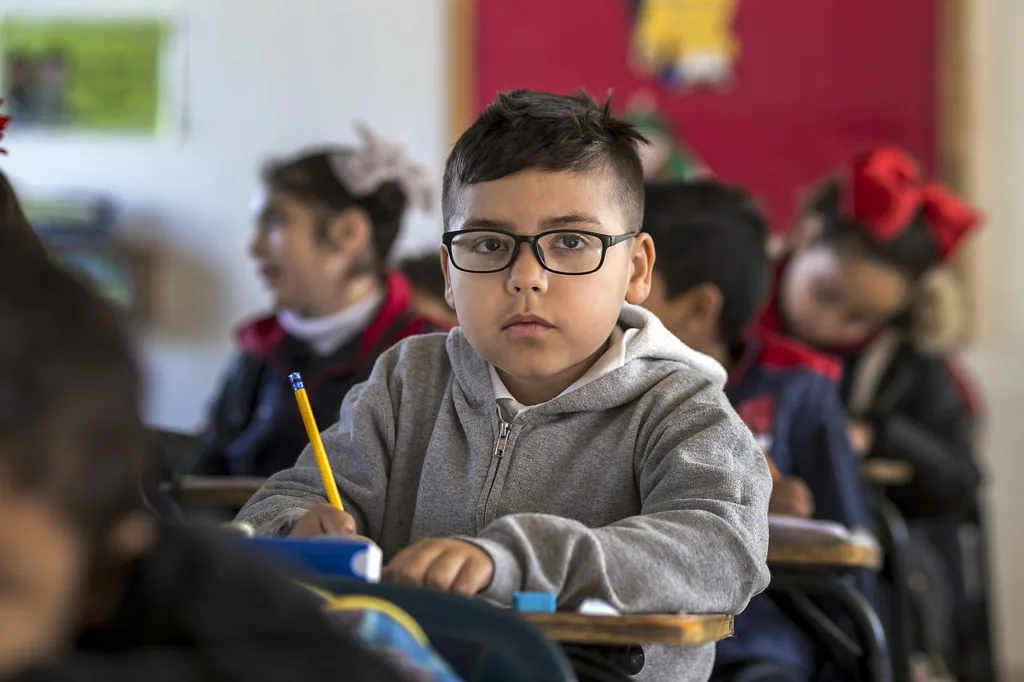Table of Contents
Child labour is a complex issue that has a devastating impact on millions of children worldwide. Writing an essay on this topic can help to raise awareness and encourage action towards addressing this pressing issue. Through in-depth research and thoughtful analysis, we can explore the root causes of child labour, its impact on children and society, and the solutions that can make a difference. By shedding light on this important topic, we can inspire individuals and communities to take action and work towards a future where every child can enjoy their childhood and reach their full potential.Lets continue to the topic 10 Child Labour Essay.
"Lost Childhood": A Look at the Tragedy of Child Labour
Childhood is a magical time, full of laughter, games, and dreams. It is a time when children explore the world around them, learn new things, and develop their personalities. Unfortunately, not all children are able to enjoy this wonderful period of life. For millions of children around the world, childhood is lost to the tragedy of child labour.
Child labour is a scourge that has plagued societies for centuries. It is a practice that deprives children of their innocence, their dignity, and their future. Instead of playing with friends, attending school, and enjoying the simple pleasures of childhood, these children are forced to work long hours in hazardous conditions, often for very little pay.
The consequences of child labour are devastating. Physically, children are at risk of injury, illness, and even death, as they are often made to work in dangerous environments such as mines, factories, and farms. Mentally, they are deprived of the opportunity to learn, to grow, and to develop their potential. Emotionally, they are often traumatized by their experiences, with many suffering from anxiety, depression, and a sense of hopelessness.
The tragedy of child labour is particularly acute in developing countries, where poverty is widespread and education is often a luxury that only the privileged can afford. In many of these countries, families are forced to rely on their children’s labour to survive, as they struggle to make ends meet.
However, the problem of child labour is not limited to developing countries. Even in the developed world, children are still at risk of exploitation and abuse, particularly in industries such as agriculture, manufacturing, and domestic work.
So, what can be done to address this tragedy? There is no easy answer, but there are steps that can be taken to make a difference. Governments, NGOs, and businesses can work together to improve labour laws and regulations, to enforce those laws more effectively, and to provide support for families living in poverty. Education is also crucial, as it provides children with the skills and knowledge they need to break the cycle of poverty and exploitation.
At the individual level, there are many things that we can do to make a difference. We can raise awareness of the issue, support organizations working to combat child labour, and make conscious choices as consumers to avoid products that have been produced using child labour.
Ultimately, ending child labour requires a collective effort from all sectors of society. We must come together to recognize the tragedy of lost childhood, and to take action to create a better future for all children, where they can enjoy their childhood, receive an education, and pursue their dreams.
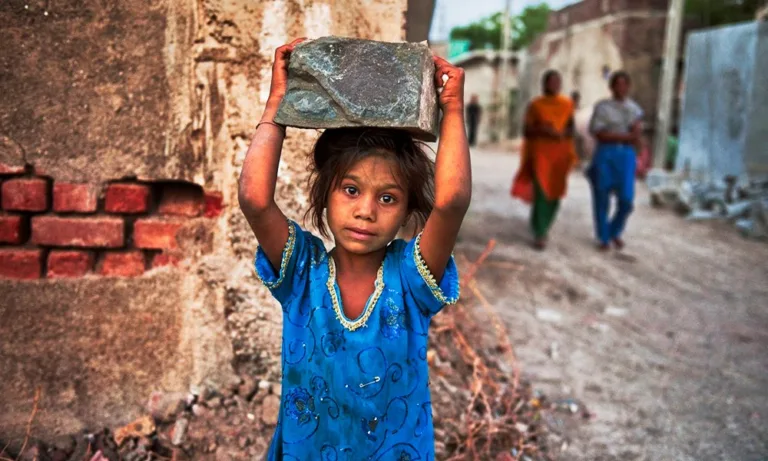
"Breaking the Chains": Fighting Against Child Labour
In a world where children are supposed to be carefree and innocent, it is heartbreaking to know that millions of them are subjected to the horrors of child labour. For too many children, their childhood is nothing more than a distant dream, replaced by long hours of hard labour and exploitation. But there is hope. There are people and organizations fighting to break the chains of child labour and to give these children a chance to live the life they deserve.
Breaking the chains of child labour is not an easy task. The issue is complex and deeply rooted in poverty, lack of education, and societal norms. But despite the challenges, there are organizations and individuals who are working tirelessly to make a difference.
At the forefront of this fight are NGOs and non-profits that are dedicated to ending child labour. These organizations provide a range of services, from rescuing children from dangerous work environments to providing education and vocational training. They also work with governments and businesses to promote policies and practices that protect children’s rights.
One such organization is the International Labour Organization (ILO), which has been fighting against child labour for over a century. The ILO works with governments, employers, and workers to promote decent work for all, including the elimination of child labour. Through research, advocacy, and partnerships, the ILO is working to create a world where every child has the opportunity to go to school, play, and grow up free from exploitation.
But it is not just organizations that are fighting against child labour. Individuals can also make a difference. By being aware of the issue and making conscious choices as consumers, we can help to reduce the demand for products that are produced using child labour. We can also support organizations working on the ground, by donating money or volunteering our time.
Education is also a key tool in breaking the chains of child labour. By providing children with access to quality education, we can help to break the cycle of poverty that often leads to child labour. Education gives children the skills and knowledge they need to create a better future for themselves and their families.
Breaking the chains of child labour is a daunting task, but it is not impossible. By working together, we can create a world where every child has the opportunity to be a child, to learn, and to grow up free from exploitation. We can break the chains of child labour, and give these children the chance to build a better future for themselves and their communities.
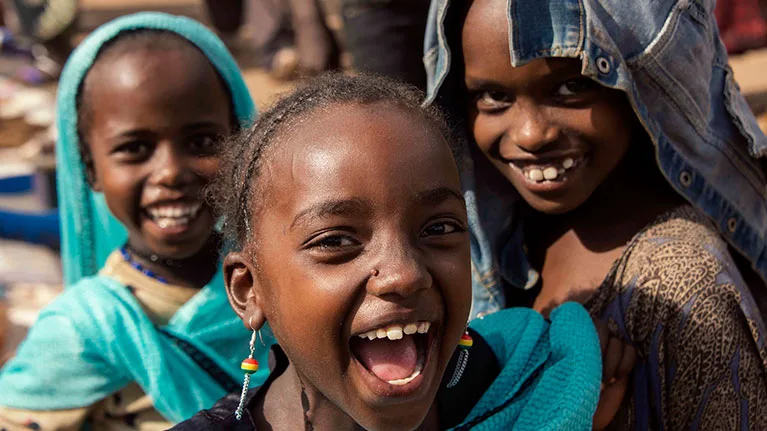
"Innocence Stolen": The Impact of Child Labour on Children
Childhood is supposed to be a time of innocence, playfulness, and joy. Sadly, for millions of children around the world, their innocence is stolen from them by the harsh realities of child labour. The impact of child labour on children is profound, leaving deep scars that can last a lifetime.
At the heart of child labour is exploitation. Children are forced to work long hours in dangerous and often illegal conditions, with little or no pay. Many are separated from their families, and some are even trafficked across borders. The impact of this exploitation is devastating.
Physically, child labour takes a toll on children’s bodies. They are often forced to do back-breaking work that is beyond their physical capabilities. They are exposed to hazardous materials and dangerous machinery, which can cause serious injuries or even death. Many suffer from malnutrition and health problems due to their working conditions.
Emotionally, the impact of child labour is equally devastating. Children who are forced to work miss out on the joys of childhood, such as playtime and education. They are robbed of the chance to form lasting friendships and to explore the world around them. Instead, they are forced to work long hours in isolation, without any social or emotional support.
The psychological impact of child labour can be lifelong. Children who are forced to work often suffer from anxiety, depression, and post-traumatic stress disorder (PTSD). They may struggle to form healthy relationships later in life, and may have difficulty trusting others. The trauma of their experiences can also lead to substance abuse and other destructive behaviors.
The impact of child labour is not limited to the individual child. It also has far-reaching effects on families and communities. Children who are forced to work are often unable to contribute to their families’ incomes, which can lead to poverty and further exploitation. The loss of education also has long-term implications for communities, as it limits their ability to develop and thrive.
Innocence is stolen when a child is forced to work. The impact of child labour on children is profound and far-reaching, leaving deep scars that can last a lifetime. It is up to all of us to take action to end this exploitation, and to give every child the chance to experience the joys of childhood. We must work together to create a world where every child is free to play, learn, and grow without fear of exploitation.

"A Bleak Future": The Consequences of Child Labour
Child labour has severe consequences that impact not only the present but also the future of a child. It robs children of their childhood and sets them on a path of lifelong poverty and struggle. The consequences of child labour are far-reaching, affecting not only the children but also their families and communities.
One of the most significant consequences of child labour is the loss of education. Children who are forced to work are often unable to attend school, which limits their opportunities in life. They are unable to develop the skills and knowledge necessary to secure well-paying jobs, perpetuating a cycle of poverty that is difficult to break.
The lack of education also has long-term implications for communities. Without educated individuals, communities are unable to develop and thrive. This can lead to increased poverty, lack of access to healthcare, and limited economic growth.
The physical consequences of child labour are also severe. Children are often forced to work in hazardous conditions, leading to injury and illness. Many suffer from malnutrition, which can cause stunted growth and long-term health problems.
Emotionally, child labour takes a toll on children’s mental health. They are often forced to work long hours in isolation, without any social or emotional support. This can lead to anxiety, depression, and post-traumatic stress disorder (PTSD). The trauma of their experiences can also lead to substance abuse and other destructive behaviors.
The consequences of child labour extend beyond the individual child to their families and communities. Children who are forced to work are often unable to contribute to their families’ incomes, perpetuating a cycle of poverty. The loss of education and economic opportunities also limits communities’ ability to develop and thrive.
The consequences of child labour are bleak, but there is hope. With concerted efforts from governments, organizations, and individuals, we can work to end child labour and give every child the opportunity to thrive. By investing in education and providing economic opportunities, we can break the cycle of poverty and set children on a path to a brighter future.
In conclusion, the consequences of child labour are far-reaching and devastating. They rob children of their childhood and set them on a path of lifelong poverty and struggle. It is up to all of us to take action and work towards ending this exploitation. We must invest in education and provide economic opportunities to give every child the chance to realize their full potential and create a better future for themselves and their communities.
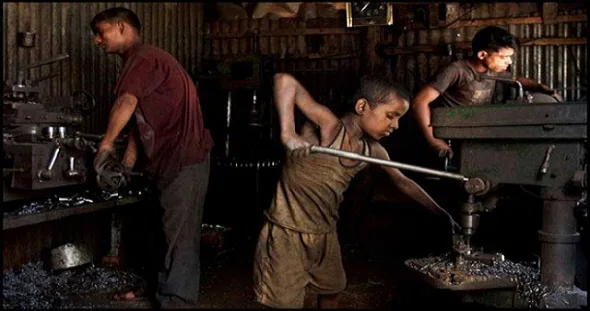
"The Faceless Victims": Giving a Voice to Child Labourers
Child labourers are often faceless victims of exploitation, forced to work in dangerous and degrading conditions without any rights or protections. They are invisible to society, living in the shadows of our cities and towns, and their voices are rarely heard. But behind the statistics and the stories of child labour, there are real children with real hopes and dreams, and they deserve to be seen and heard.
For many children, child labour is not a choice but a necessity. Poverty, lack of education, and the absence of social safety nets force them into work at an early age. They are often subjected to long hours of work in hazardous conditions, with little or no pay. Many of them are forced to work in sectors such as agriculture, mining, and domestic work, where they are subjected to abuse and exploitation.
The consequences of child labour are devastating. It denies children the opportunity to receive an education, to develop their skills and talents, and to enjoy their childhood. It also perpetuates poverty, inequality, and social injustice, creating a cycle of poverty that is difficult to break.
Giving a voice to child labourers is essential to combatting this exploitation. It is important to listen to their stories, to understand their struggles, and to recognize their dignity and worth. We must also empower them to speak out against their exploitation, to demand their rights and protections, and to access education and economic opportunities.
Through advocacy, education, and empowerment, we can give a voice to child labourers and help to break the cycle of poverty and exploitation. We must also hold accountable those who perpetuate this exploitation, including governments, corporations, and individuals.
In conclusion, child labourers are the faceless victims of exploitation, forced to work in dangerous and degrading conditions without any rights or protections. But behind the statistics and the stories of child labour, there are real children with real hopes and dreams, and they deserve to be seen and heard. Giving a voice to child labourers is essential to combatting this exploitation and creating a brighter future for all children. It is up to all of us to take action, to advocate for their rights, and to empower them to realize their full potential.
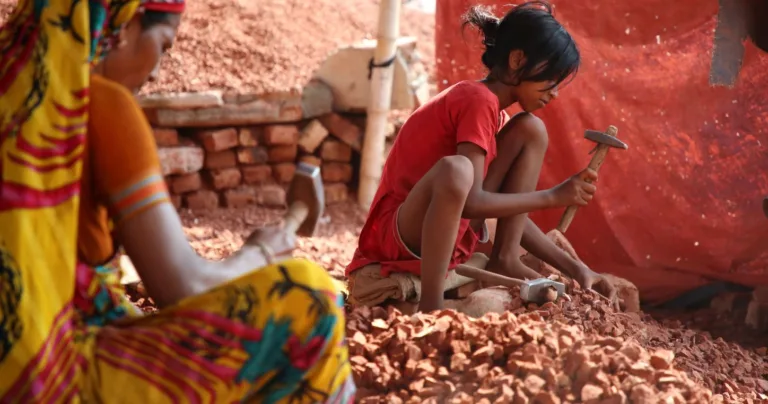
"Breaking the Cycle": Education as a Solution to Child Labour
Child labour is a pervasive problem that affects millions of children around the world. Poverty, lack of education, and social inequality are some of the main factors that contribute to the prevalence of child labour. However, education can be a powerful tool in breaking the cycle of exploitation and poverty that perpetuates child labour.
Education provides children with the knowledge, skills, and opportunities they need to escape the trap of poverty and exploitation. It empowers them to break free from the constraints of their circumstances and to realize their full potential. Education can also create a ripple effect that transforms entire communities, breaking the cycle of poverty and exploitation.
One of the primary reasons why children are forced into labour is the lack of access to education. When families are struggling to make ends meet, sending their children to school is often seen as a luxury they cannot afford. But education is not a luxury; it is a fundamental right that should be accessible to all children, regardless of their socio-economic background.
By investing in education, we can provide children with the skills and knowledge they need to succeed in life. This includes not only academic skills but also life skills, such as critical thinking, problem-solving, and communication. With education, children are better equipped to navigate the challenges of the world around them and to create a brighter future for themselves and their families.
Education also provides an alternative to child labour. When children are given the opportunity to attend school, they are less likely to be forced into work at a young age. Instead, they can focus on their studies and prepare for a brighter future. This, in turn, can help to break the cycle of poverty that fuels child labour.
In conclusion, education is a powerful tool in breaking the cycle of exploitation and poverty that perpetuates child labour. It empowers children to break free from the constraints of their circumstances and to realize their full potential. By investing in education, we can provide children with the knowledge, skills, and opportunities they need to succeed in life and to create a brighter future for themselves and their communities. It is up to all of us to take action, to advocate for education as a solution to child labour, and to break the cycle of exploitation for good.
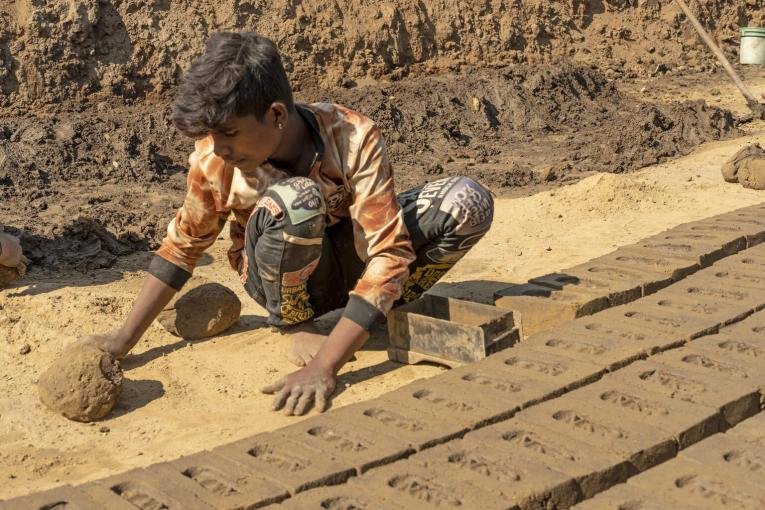
"A Shared Responsibility": Ending Child Labour Requires a Collective Effort
Child labour is a complex and multifaceted problem that requires a collective effort to address. Governments, businesses, civil society organizations, and individuals all have a role to play in ending child labour and creating a world where all children can grow up safe, healthy, and free from exploitation.
Governments play a critical role in protecting children’s rights and enforcing laws that prohibit child labour. They must work to create an enabling environment for children’s rights, including access to education, healthcare, and other basic services. Governments must also take steps to ensure that businesses are held accountable for their supply chains and that they do not profit from child labour.
Businesses have a responsibility to respect human rights, including the rights of children. They must take steps to ensure that their operations and supply chains do not involve child labour, and they must work with their suppliers to address any violations. Businesses can also support education and training programs that help to create alternatives to child labour.
Civil society organizations play a critical role in advocating for children’s rights and providing support to child labourers and their families. They can provide education and training programs, legal assistance, and other services to help children escape the cycle of poverty and exploitation. Civil society organizations can also work to raise awareness about the impact of child labour and advocate for policy and legislative changes that protect children’s rights.
Individuals also have a role to play in ending child labour. We can support businesses that are committed to respecting human rights and avoiding child labour in their operations and supply chains. We can also support civil society organizations that work to protect children’s rights and advocate for policy and legislative changes. As consumers, we can make informed choices about the products we buy and the companies we support, and we can use our voices to demand change.
In conclusion, ending child labour requires a collective effort from governments, businesses, civil society organizations, and individuals. We all have a responsibility to protect children’s rights and to ensure that they have access to education, healthcare, and other basic services. By working together, we can create a world where all children can grow up safe, healthy, and free from exploitation. It is up to all of us to take action and to make a difference in the lives of child labourers around the world.

"Hope for the Future": The Power of Empowering Child Labourers
The tragedy of child labour affects millions of children around the world, stealing their childhoods and denying them the opportunities they need to grow and thrive. But there is hope for the future, and it lies in the power of empowering child labourers to take control of their lives and create a better future for themselves and their communities.
Empowering child labourers means giving them the tools and resources they need to escape the cycle of poverty and exploitation. This can involve providing education and training programs that help children acquire the skills and knowledge they need to secure decent jobs and earn a living wage. It can also involve providing access to healthcare, nutrition, and other basic services that are essential for their wellbeing.
But empowering child labourers also means giving them a voice and a platform to advocate for their rights and the rights of all children. It means recognizing them as agents of change, capable of shaping their own futures and contributing to the development of their communities. By empowering child labourers, we can create a world where all children have the opportunity to reach their full potential and live with dignity and respect.
There are many examples of programs and initiatives that have successfully empowered child labourers and helped them escape the cycle of poverty and exploitation. For example, the International Labour Organization’s (ILO) International Programme on the Elimination of Child Labour (IPEC) works with governments, civil society organizations, and communities to provide education and training programs, as well as other support services, to child labourers and their families. These programs help children acquire the skills they need to secure decent jobs and earn a living wage, while also addressing the root causes of child labour, such as poverty, lack of access to education, and discrimination.
Another example of an initiative that has successfully empowered child labourers is the Child Labour Free Zone project, which was launched by the Dutch NGO Stop Child Labour in 2012. This project works with communities in India, Nepal, and Bangladesh to create “child labour-free zones,” where all children are able to attend school and work is prohibited for anyone under the age of 18. By engaging with local communities and providing education and training programs, the project has helped thousands of children escape the cycle of poverty and exploitation and create a better future for themselves and their families.
In conclusion, the power of empowering child labourers is immense, and it offers hope for a brighter future for millions of children around the world. By providing education and training programs, access to basic services, and a platform to advocate for their rights, we can create a world where all children have the opportunity to reach their full potential and live with dignity and respect. We must continue to work together to empower child labourers and create a brighter future for generations to come.

"A Call to Action": Joining the Fight Against Child Labour
The tragedy of child labour is a global problem that affects millions of children around the world. It is a problem that robs children of their childhoods, denies them the opportunities they need to grow and thrive, and perpetuates a cycle of poverty and exploitation that can last for generations. But it is also a problem that we can solve, and it requires a collective effort from all of us to make a difference.
Joining the fight against child labour starts with understanding the problem and its root causes. It means recognizing that child labour is not just a symptom of poverty, but a complex issue that is driven by a range of factors, including lack of access to education, discrimination, and weak labour laws and enforcement. It also means acknowledging the impact of child labour on children, families, and communities, and the importance of creating safe and supportive environments that allow children to grow and thrive.
But joining the fight against child labour also means taking action. It means supporting initiatives and organizations that are working to address the problem, such as the International Labour Organization’s (ILO) International Programme on the Elimination of Child Labour (IPEC) or local organizations in affected areas. It also means advocating for policies and practices that protect children’s rights and prevent child labour, such as stronger labour laws and enforcement, access to education, and social protections for families.
There are many ways that individuals can join the fight against child labour, from donating to organizations that are working to address the problem, to volunteering time and resources to support local initiatives. It can also involve spreading awareness about the issue and advocating for change in our own communities and beyond.
For example, individuals can use their social media platforms to share information about child labour and advocate for change, or they can support fair trade practices and businesses that prioritize ethical labour practices. They can also engage with their elected officials and encourage them to support policies and initiatives that address the root causes of child labour.
In conclusion, joining the fight against child labour is a call to action that requires a collective effort from all of us. It is a call to recognize the impact of child labour on children, families, and communities, and to take action to address the problem. By supporting initiatives and organizations that are working to eliminate child labour, advocating for policies and practices that protect children’s rights, and spreading awareness about the issue, we can create a world where all children have the opportunity to reach their full potential and live with dignity and respect.
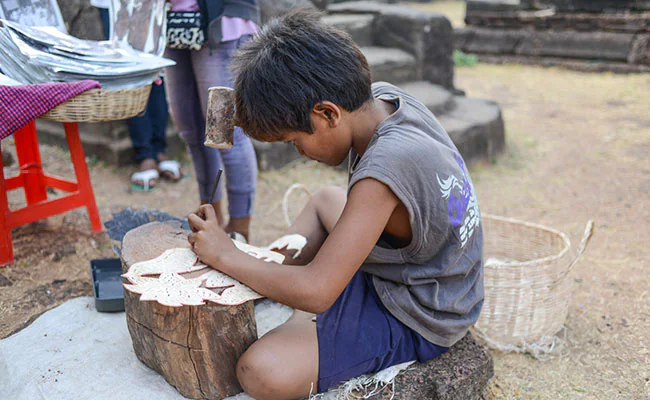
"The Power of Change": Making a Difference in the Lives of Child Labourers
Child labour is a global issue that affects millions of children around the world. It is a problem that robs children of their childhoods, denying them the opportunities they need to grow and thrive. It is a problem that perpetuates a cycle of poverty and exploitation, creating a bleak future for these children. But it is also a problem that can be solved, and the power to make a difference lies in our hands.
The power of change begins with recognizing the value and dignity of every child, and understanding the impact that child labour has on their lives. Child labour affects children physically, emotionally, and psychologically. It robs them of their childhood, and exposes them to dangerous working conditions that can result in injury or death. It also denies them the opportunity to attend school and receive an education, perpetuating a cycle of poverty and exploitation that can last for generations.
Making a difference in the lives of child labourers means taking action to address the root causes of the problem. It means creating safe and supportive environments that allow children to grow and thrive, and providing access to education, healthcare, and social protections for families. It also means advocating for policies and practices that protect children’s rights and prevent child labour, such as stronger labour laws and enforcement.
But making a difference in the lives of child labourers also means supporting initiatives and organizations that are working to address the problem. It means donating time and resources to support local initiatives, or contributing to organizations that are working to eliminate child labour. It means raising awareness about the issue and advocating for change in our own communities and beyond.
For example, one way to make a difference in the lives of child labourers is to support initiatives that provide education and training to children and their families. This can help break the cycle of poverty and exploitation by providing children with the skills they need to pursue better opportunities in the future. Another way to make a difference is to support businesses that prioritize ethical labour practices and fair trade, ensuring that the products we buy are not made through the exploitation of children.
In conclusion, the power of change lies in our hands. By recognizing the value and dignity of every child, understanding the impact of child labour on their lives, and taking action to address the root causes of the problem, we can make a difference in the lives of child labourers. By supporting initiatives and organizations that are working to eliminate child labour, and advocating for policies and practices that protect children’s rights, we can create a world where all children have the opportunity to grow, learn, and thrive.
FOR MORE VALUABLE TIPS BUY OUR PARENTING COURSES AT https://www.kidzoot.com/courses/
CONSULT YOUR PERSONAL PARENTING SOLUTIONS VIA APPOINTINTMENT AT https://www.kidzoot.com/appointment-booking/
Follow Us on Twitter www.twitter.com/kidzootworld

